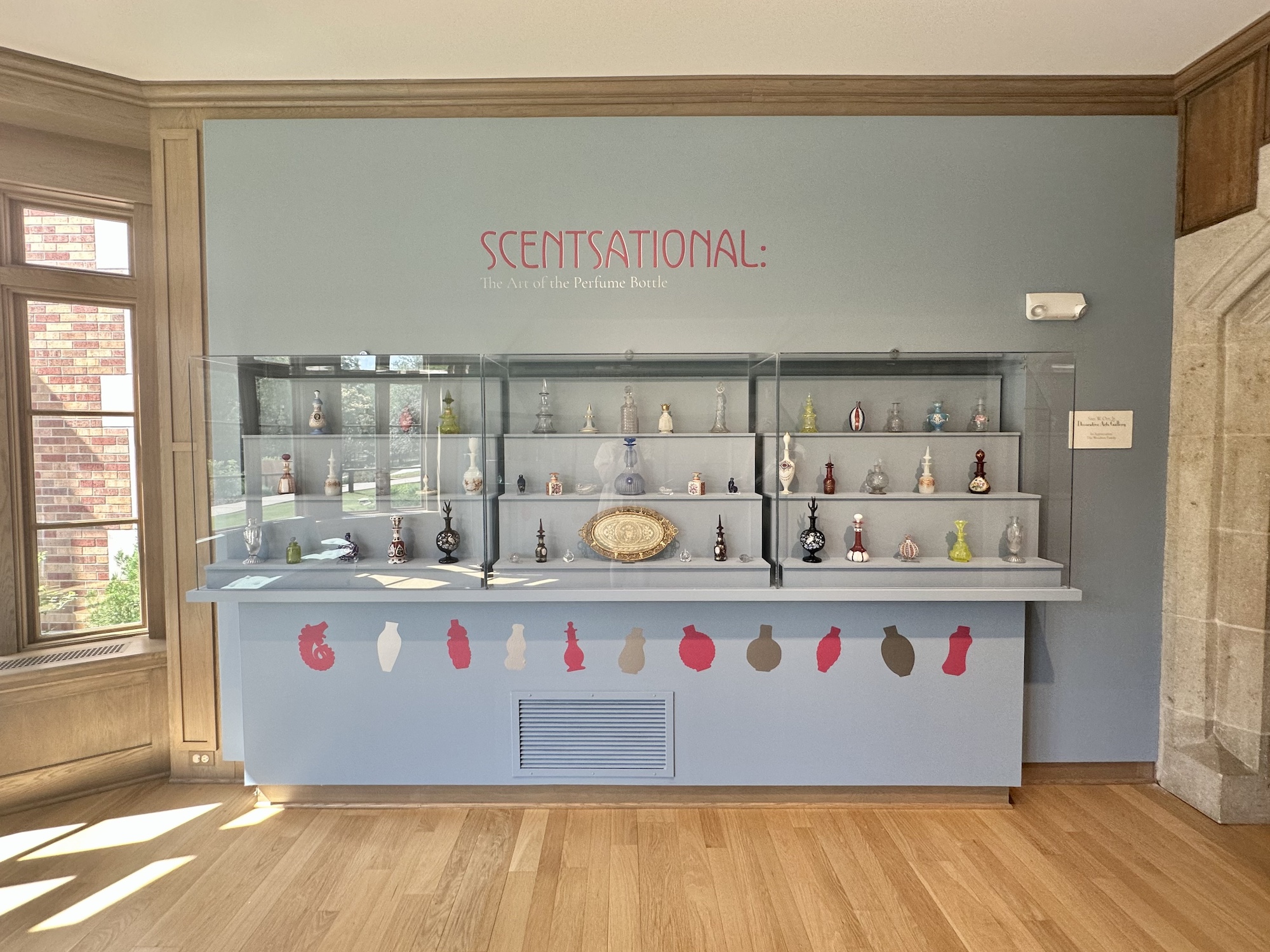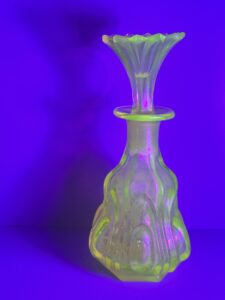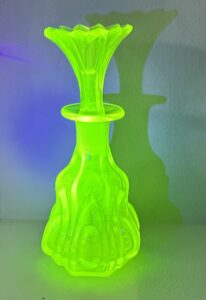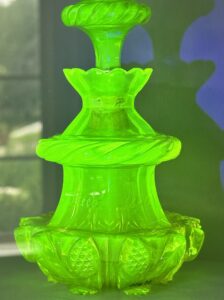
Amalia Wojciechowski, assistant director & collections curator
Not surprisingly to those who know me, I spend a lot of my free time reading. A genre that I have always especially enjoyed is history. A few years ago, I had the pleasure of reading The Radium Girls by Kate Moore. It tells the story of young women producing watches during the early twentieth century, inadvertently poisoning themselves by wetting radium-coated paintbrushes in their mouths to create a fine point to paint watch dials. The book goes on to detail the long struggle for workers’ rights to gain justice for these “shining women.”

Scentsational Perfume Bottles under natural light
While I’m not comparing working at the Woodson to licking irradiated paint, I did recently have my own brush with the heavier elements (pardon the chemistry pun…). Nearly a hundred perfume bottles dating from the eighteenth and nineteenth centuries comprise some of the Museum’s early collection. They’re particularly intriguing when considered en masse, not only as part of the history of decorative arts but also as part of its conjuncture with the functional. As I pulled them out of storage in preparation for Scentsational: The Art of the Perfume Bottle, now on view, I couldn’t help but wonder about a few of them…

Perfume bottle beginning to fluoresce under black light

Perfume bottle, maker unknown, 19th c., glass, Leigh Yawkey Woodson Art Museum, Woodson Family Collection under direct UV light
Uranium glass is a well-known collector’s item, prized for its vivid colors and eerie green glow under blacklight. Made by adding uranium oxide to molten glass, it was especially popular from the 1830s to the 1930s in a wide range of products from tableware to decorative objects. While it contains low levels of radioactivity, it’s considered safe to handle—though not necessarily to eat from. As I sifted through delicate vessels for Scentsational, I spotted a few with that unmistakable yellow-green tint, and yes, I brought out a black light (courtesy of one of our docents and a partner-in-crime to this irradiated mystery). We looked together, just in case, once the bottles were safely behind Plexi. Because, as The Radium Girls taught me, it never hurts to ask what’s glowing in the dark.

Black light can also reveal previously unreadable details, like the inscription “Decb 1840”
